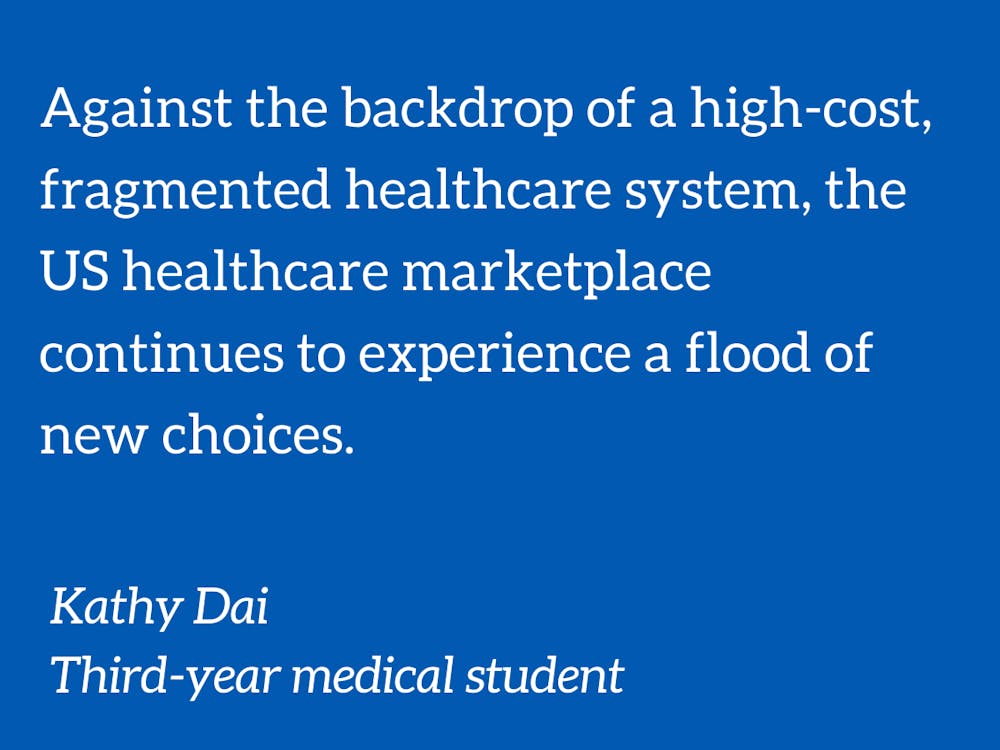“The healthcare business has never been better. The healthcare system is a disaster.”
Dr. Robert Califf, a Duke-trained cardiologist who was confirmed by the Senate last week for his second term as commissioner of the Food and Drug Administration, recently borrowed this quote from a colleague to describe the US healthcare system.
The quote captures a well-known paradox in the US, where exorbitant and still-rising healthcare costs exist simultaneously with worse health outcomes compared to other high-income countries. Higher US healthcare expenditures are driven in part by higher prices of goods, including drugs, devices, and imaging—this likely comes as no surprise to most patients. In addition to the cost of goods and labor, however, about 8% of US healthcare spending is on administrative costs compared to 1-3% in the 10 other highest-income countries. In turn, high administrative costs are partly due to the value that Americans place on choice. Having a choice of insurance plans, for example, leads to the fragmentation of payers, complexity in billing and higher marketing costs for plans vying for customers.
Against this backdrop of a high-cost, fragmented healthcare system, the healthcare marketplace continues to experience a flood of new choices. A growing number of companies are offering sleek healthcare products and new models of care delivery for their customers—who also happen to be patients.
One Medical, a for-profit chain of primary care clinics owned by the company 1Life Healthcare and backed by Google’s parent company Alphabet, was recently integrated into the Duke Primary Care Network. For a $199 annual fee, members have access to 24/7 video chat with providers, appointment scheduling and medication refills through their app. The brick-and-mortar One Medical clinics, including a new Brightleaf Square location in downtown Durham, operate much like standard primary care practices but with beautiful interiors that feel more like a tech company than a doctor’s office. The membership fee, which “covers costs associated with access to the 1Life Healthcare proprietary technology platform” is not required to see a doctor at a One Medical primary care office. Even with the membership fee, all other costs (e.g. lab tests, medications, copays) still apply and are billed through patients’ insurance or paid out-of-pocket. Taken together, the core business model appears to be offering a lower-cost, high-tech concierge medicine experience.
Another approach to healthcare delivery adopted by many insurance companies and venture-backed startups is the virtual-first primary care model. Catalyzed by the rapid uptake of telehealth during the pandemic, these companies are making virtual appointments the norm and offering them at lower prices than traditional healthcare plans. One virtual-first primary care startup, Firefly Health, also features an innovative care team for each patient, composed of an MD, a nurse practitioner (NP), and a health guide.
Companies like One Medical, Firefly Health and the virtual-first insurance plans have promising cost reduction potential—triaging symptoms with a virtual provider can reduce unnecessary urgent care visits, and user-friendly virtual visits, prescription refills and scheduling can reduce administrative costs and improve the healthcare experience. In addition, the integration of NPs, mental health providers and health coaches into the longitudinal care teams like those offered at Firefly is an innovative strategy for supporting overall patient wellness often overlooked by traditional healthcare systems.
However, as two Harvard physicians point out, these same companies are also more likely to attract younger patients of higher socioeconomic status (SES) who tend to utilize the healthcare system the least—therefore making these companies very likely to be profitable. In addition, despite each company marketing a modern, integrated healthcare experience for their individual users, their impact on the overall US healthcare system is at best unmeasured.
At worst, the ever-growing variety of for-profit care models may lead to further fragmentation of the US healthcare system and widening healthcare disparities based on SES and access to digital technology. These companies may prove to be clear examples of suboptimization, the inefficient process of optimizing individual fragments of a system (in this case, company performance) without regard to the whole. Now-FDA commissioner Dr. Califf describes suboptimization as a key driver of dysfunction in the US healthcare system.
Certainly, having tech-enhanced healthcare with an attractive user interface should appeal to patients and providers alike. In a functional healthcare ecosystem, doctors’ offices should be as inviting and modern as a tech company workspace. Perhaps interpreting “patient-centered” as “consumer-centered” will push the healthcare industry to catch up to the standards of convenience and functionality set by every other industry. However, as with any healthcare innovation, it is essential for clinicians, community leaders and patient advocates to be involved in shaping the business of healthcare.
Kathy Dai is a third-year medical student at Duke University. Her column “Follow the Money” runs every third Friday.
Get The Chronicle straight to your inbox
Signup for our weekly newsletter. Cancel at any time.

